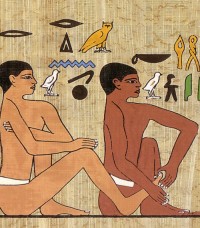It would be several centuries and a number of transformations later however before reflexology came to the West and started to form the basis of what we practise today.
The work of Dr William Fitzgerald in the early 1900’s played a significant role in moving towards modern reflexology as he researched and later published work on ‘zone therapy’. This worked on the premise that the body was divided into 10 longitudinal zones with each toe defining a zone that went up through the body. By working a zone on the foot you were actually working the full body zone. In some respects this built upon the work of the Chinese who, as far back as 2,500 B.C., had divided the body into longitudinal meridians for acupuncture.
Ms E. Ingham, an American Physiotherapist in the 1930’s, took zone therapy one step further and intricately mapped the organs and glands of the body on to reflex points on the feet and hands. She believed that congestion found in a particular reflex point suggested congestion in the corresponding body part and therefore, working the appropriate reflex point would have a positive effect on the corresponding organ or gland.
Her foot map has provided the basis for many of the maps used by reflexologists today and she is now often referred to as ‘The Mother of Reflexology’. At a time when complementary therapies were still seriously in question, Ms Ingham faced court proceedings for practising medicine without a licence. Luckily the charges were dropped before they reached court and whilst she retired from treating clients and teaching, her methods were adopted and adapted by a number of fellow therapists determined to see reflexology live on.
